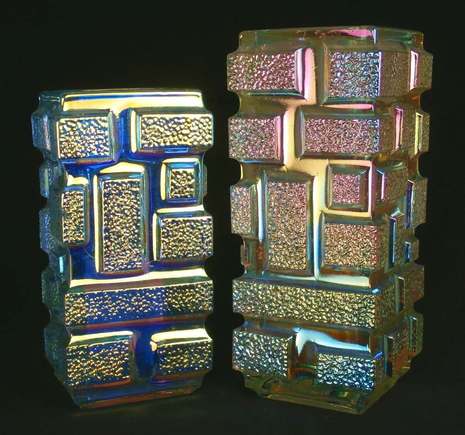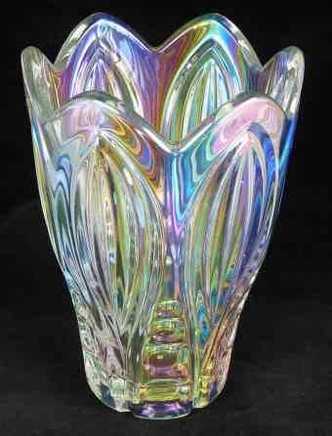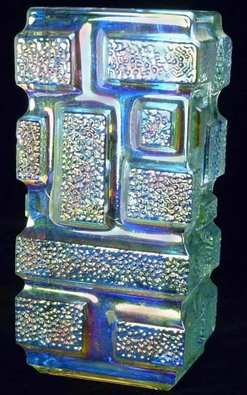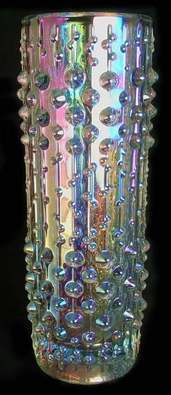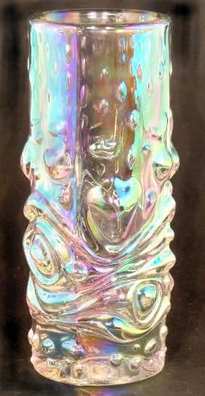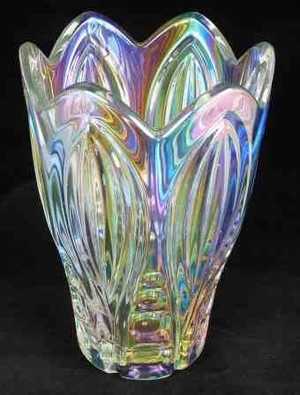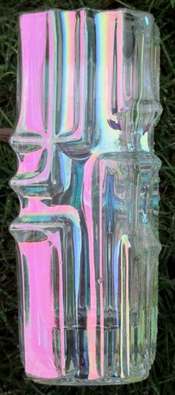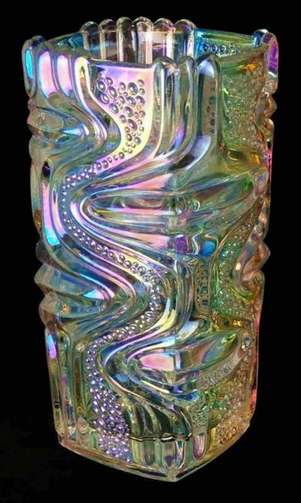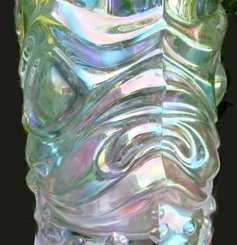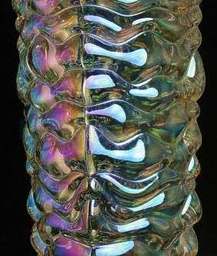The Story Behind The Glass - Sklo Union Iridescent Vases
Chasing the Rainbow
It begins like a whisper. A capricious soap-bubble of colour that shimmers as it moves, glistening pink, purple, aqua and lime, finally turning to molten gold. You move the glass this way and that, following the colours, momentarily losing them, and then capturing the full rainbow of glorious iridescence with a gasp. It’s like chasing a rainbow – but this one is frozen on glass.
It begins like a whisper. A capricious soap-bubble of colour that shimmers as it moves, glistening pink, purple, aqua and lime, finally turning to molten gold. You move the glass this way and that, following the colours, momentarily losing them, and then capturing the full rainbow of glorious iridescence with a gasp. It’s like chasing a rainbow – but this one is frozen on glass.
The Story of Czech Carnival Glass
Czechoslovakia (now the Czech Republic) has a long history of glassmaking dating back to around the 13th. century, with an international reputation for quality craftsmanship, beauty and often innovative designs (indeed, the Czechs used iridescence on their Art Glass during the 1800s). We believe that the first use of iridescence on pressed glass in Czechoslovakia was done at Josef Inwald’s Rudolfova Hut glassworks in c.1914 or possibly a little earlier. Inwald’s glass patterns and shapes were designed by a man of incredible talent – Rudolf Schrotter (also known as “The Master”) – who worked for around three decades. Marigold Carnival was the predominant colour of Czech Carnival, often of superb quality (especially from Inwald).
After the end of World War II, the re-organisation and consolidation of the Czech glassworks resulted in the formation of a single organisation called Sklo Union (Glass Union) in 1965. Typified by innovative patterns and forms, created by talented designers, breathtaking pieces of glass were mass-produced by the glassworks of the newly formed Czech Republic.
A very small amount of this “Designer” glass was iridised – vases mainly, but other shapes too such as baskets and ashtrays. The iridescence was very different from the earlier rich marigold. Our recent research (February 2021) has uncovered information about a firm in the Czech Republic called LiGlass, that had split off from the Železný Brod glassworks in 1990. One of the specialities of the LiGlass company was vacuum iridising glass that was brought in from other glassmakers (in the style of the LGW vacuum process). A shimmering, pastel iridescence, using titanium, was applied to some items from Sklo Union glassworks. We believe that this was how these beautiful vases shown below were iridised.
Read more about LiGlass, where you can see other items iridised in this way, here: LiGlass Vacuum Iridising
Czechoslovakia (now the Czech Republic) has a long history of glassmaking dating back to around the 13th. century, with an international reputation for quality craftsmanship, beauty and often innovative designs (indeed, the Czechs used iridescence on their Art Glass during the 1800s). We believe that the first use of iridescence on pressed glass in Czechoslovakia was done at Josef Inwald’s Rudolfova Hut glassworks in c.1914 or possibly a little earlier. Inwald’s glass patterns and shapes were designed by a man of incredible talent – Rudolf Schrotter (also known as “The Master”) – who worked for around three decades. Marigold Carnival was the predominant colour of Czech Carnival, often of superb quality (especially from Inwald).
After the end of World War II, the re-organisation and consolidation of the Czech glassworks resulted in the formation of a single organisation called Sklo Union (Glass Union) in 1965. Typified by innovative patterns and forms, created by talented designers, breathtaking pieces of glass were mass-produced by the glassworks of the newly formed Czech Republic.
A very small amount of this “Designer” glass was iridised – vases mainly, but other shapes too such as baskets and ashtrays. The iridescence was very different from the earlier rich marigold. Our recent research (February 2021) has uncovered information about a firm in the Czech Republic called LiGlass, that had split off from the Železný Brod glassworks in 1990. One of the specialities of the LiGlass company was vacuum iridising glass that was brought in from other glassmakers (in the style of the LGW vacuum process). A shimmering, pastel iridescence, using titanium, was applied to some items from Sklo Union glassworks. We believe that this was how these beautiful vases shown below were iridised.
Read more about LiGlass, where you can see other items iridised in this way, here: LiGlass Vacuum Iridising
The Iridised Vases
|
Brick Vase, 7" rectangular (1969)
Two sizes are known to us iridised: 7” and 8.5” in both square and rectangular shapes.* Rudolfova Hut, #13261/2 Designer Jiri Zemon |
Candlewax Vase, 9" (1974)
Two sizes of iridised vases are known: 7” and 9” There is an 11” vase but an iridised one is not yet known to us. Hermanova Hut, #20245 Designer Frantisek Peceny |
Dragon Vase, 8" (1972)
Three sizes of iridised vases are known to have been made: 6”, 8” and 10”. Hermanova Hut, #20235 Designer Frantisek Peceny |
* An iridised ashtray is also reported. Other shapes and sizes may be found iridised.
|
Lily of the Valley Vase, 8" (c.1960s)
Three sizes of vase were made but we can’t confirm if all sizes were iridised. Rudolfova Hut, #12962 Designer Rudolf Schrotter |
|
